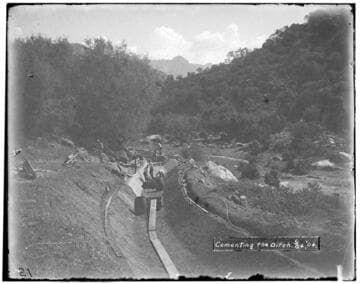Rare Books
Ferro-cement boat construction
Image not available
You might also be interested in
Image not available
Il Tallone di Ferro : romanzo
Rare Books
"Questro romanzo di Jack London è una di quelle opere la cui ripresa editoriale va al di là della semplice riesumazione. Pubblicato nel 1907, rappresenta un esempio insuperato di quella che potremmo definire 'fantapolitica marxista' e, nello stesso tempo, di chiaroveggenza, davvero senza l'eguale, circa la traiettoria storico-politica della società capitalistica. È stato letto da generazioni di socialisti di tutto il mondo, che nelle sue pagine si trovarono confrontati - in un'amplificazione clamorosa e irrespirabile - con un'immagine allucinante e, ora sappiamo, anche veridica della società contemporanea; al di là delle apparenze e degli ottimismi, dell'attesa di una sua pacifica evoluzione, questa società vi è dipinta nella sua durezza senza scampo - che le viene dall'unica legge che veramente imperi: il profitto -, nella sua oppressione generalizzata, nei suoi impliciti e inevitabili sbocchi di violenza e di massacro. Si pensi alla data: 1907. Ebbene, London, a quella data prevede la prima guerra mondiale (per il 1913!) - pur illudendosi che l'Internazionale socialista sarebbe riuscita ad evitarla- e, come suo esito nei rapporti sociali di classe, il 'Tallone di Ferr' cioè quella svolta che storicamente avrebbe preso il nome di fascismo e di nazismo. Non solo, ma la sua visione - per questo si parlava spora di fantapolitica - è a tempi lunghissimi: nell'arco di secoli. Una visione tetra, senza remissione e tuttavia di storico tra le speranze migliori dell'umanità e le condizioni in cui gli uomini si trovano a vivere. Di questa situazione Ernest Everhard è il profeta lucido e impavido e la figura d'eroe che quelle speranze incarna, una sintesi di realismo chiaroveggente e di idealismo che non approda a cinismi. (Vogliamo qui ricordare che Ernesto Che Guevara deve il suo nome appunto al personaggio di London)"--Back cover.
493754 v.15
Image not available
A manual on lime and cement : their treatment and use in construction
Rare Books
721188
Image not available
Brick, cement, and tile receipts re: construction of Patton house
Manuscripts
The collection consists of business papers and correspondence related to the the Banning Company and its subsidiaries, particularly the Santa Catalina Island Company, as well as personal papers and correspondence created by members of the Banning, Patton, Glassell, Shorb, Thornton, and Thompson families. The business correspondence primarily focuses on the Bannings, and includes references to professional conflicts among the Banning brothers, the Santa Catalina Island Company, the Wilmington Transportation Company, the San Gabriel Wine Company, Mormon Island and surrounding areas, financial issues, and land sales. There are also 20 letters written between Henry E. Huntington and George S. Patton (1856-1927) from 1903-1905, and which relate to land in the San Marino area. The personal correspondence consists of letters between members of the Banning, Patton, Glassell, Shorb, Thornton, and Thompson families written in Alabama, California, Georgia, Virginia, and West Virginia. Family correspondents include Ellen Banning Ayer, Frederick Ayer, Anne Ophelia Smith Banning, Hancock Banning (1865-1925), Joseph Brent Banning, Katharine Stewart Banning, Lucy Tichenor Banning, May Alice Banning, Mary Hollister Banning, Phineas Banning, William Banning, Ynez Shorb Buck, Eliza Thompson Fry, Cornelia Fry, Charle Gibbs, E. Thornton Gibbs, Eliza Williams Patton Gilmer, Andrew Glassell (1793-1873), Andrew Glassell 1827-1901), Hugh Glassell, Susan Thornton Glassell, Maria Hamilton, Frances Hawes, Ramona Yorba Shorb Murtaugh, Mary Banning Norris, Ruth Wilson Patton, Maria de Jesus Wilson Shorb, Daniel Shorb, Donald Shorb, Joseph Campbell Shorb, Norbert N. Shorb, Ettinge Hugh Smith, George Hugh Smith, Susan Glassell Patton Smith, Edith Shorb Steele, Burkett D. Thompson, Caroline Thompson, Philip Rootes Thompson Jr., Rootes Thompson, William Thornton Thompson, Eleanor Brown Thompson Thornton, and George A. Thornton.The financial records include personal accounts, budgets, tax returns, business statements (including those for the Wilmington Transportation Co.), and receipts belonging to members of the Banning family. Personal papers include school essays and poems by the Banning children; copies of George S. Patton's accounts of his experiences in World War II; correspondence, essays, and photographs of the restoration of "The Old Mill" (El Molino Viejo), c.1965-1969; maps showing Banning harbor properties near Wilmington, San Pedro, and Los Angeles Harbors; sketches made on board the "Hermosa" in 1889; and photographs of steamships. Santa Catalina Island Co. business records include annual statements, notes on a potential sheep farming business, records of the steamers "Cabrillo" and "Hermosa," memorandum on management and policies, land papers, and receipt books. Some materials also relate to the Catalina Yacht Club. Items related to Catalina Island in general include advertising ephemera, a scrapbook, copies of magazine articles, and miscellaneous printed materials. Also included in the collection are various newspaper clippings, printed items, and ephemera.
mssBanning Company records addenda I

A construction crew cementing a ditch at Kaweah #3 Hydro Plant
Visual Materials
A construction crew cementing a ditch at Kaweah #3 Hydro Plant.
photCL SCE 04 - 00290

A construction crew at work cementing a ditch at Kaweah #2 Hydro Plant
Visual Materials
A construction crew at work cementing a ditch at Kaweah #2 Hydro Plant, May 24, 1904.
photCL SCE 04 - 00038

Tramway hauling cement up to Gem and Agnew Dams, then under construction
Visual Materials
Tramway hauling cement up to Gem and Agnew Dams, then under construction. This tramway is still in use today. Pg. 77.
photCL SCE 11 - 00158